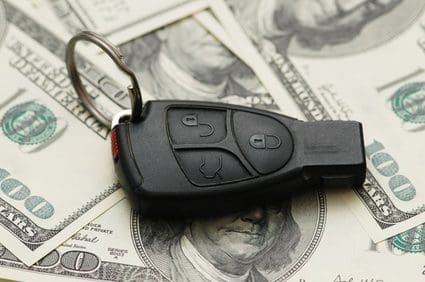
Detroit May Be America’s Comeback City: How’d They Do It?
Despite all the setbacks of 2012 — record high gas prices, Hurricane Sandy, an economy that continues to struggle — a once defeated U.S. auto industry has shown impressive resilience over the last 12 months. According to USA Today, just about everything involving domestic-made cars is better now than it was a year ago. Factories and plants have hired more workers and given existing employees more overtime opportunities, the price buyers are willing to pay at the dealership hit a record average of $30,700, and foreign companies like Saab and American Suzuki Motor have stopped selling traditional cars in the U.S.
Things are really looking up, and for good reason. The auto industry got smart about the way they compete with the global market. Something that seemed to sit on the back burner while Europe and Japan climbed to the top with superior cars. So while the industry here in the states still has a long way to go before earning back the number-one spot, some of the most important steps were made in 2012. Here’s how it happened:
The Cornerstone of an Election
When President Obama decided to bail out GM and Chrysler during the trough of the recovery, he didn’t know at the time he would also be fueling voters in his favor in states that were once home to his would-be opponent, Gov. Mitt Romney. More so than any election in recent history, the state of auto was a big talking point among each candidates campaigns. The attention given to recovering cars made in the U.S. was a key factor in its success.
Hybrids, Finally
It seemed like the Toyota Prius was the only good hybrid car anyone could buy for just about forever. It still holds the top among hybrid vehicles sold in the U.S., for domestic competitors like the Ford C-Max are covering ground quickly. The country seems to finally be getting on board with the concept of the low cost of fuel efficiency, which helps with car insurance rates that tend to be higher for hybrid vehicles. Even specialized manufacturers like Tesla are making all-electric cars a reality.
So Long, “Government Motors”
According to the U.S. Treasury Department, it plans to sell all of its 500 million shares of GM in the next 12 to 15 months, closing the books on an almost $50 million bailouts of the auto industry. Whether or not you can safely say “the bailout worked” is yet to be determined, but the fact that investor confidence is now high to put the shares of GM back onto the market, really speaks to how well the company has recovered over the last few years.
Dodging The Cliff
By narrow margins, Congress avoided the dreaded fiscal cliff at the beginning of 2013, keeping investor confidence high and giving a surge to the stock markets. According to NBC News, the Dow Jones Industrial average went up 263 points after the compromised bill passed, the largest spurge in six months. The confidence in the markets, combines with the 2012 success of the industry, will help maintain and facilitate growth for an even more prosperous 2013. However if there is one thing that could potentially hurt growth is the upcoming sequester due to congressional impasse . Set to take effect in a few weeks are automatic cuts in federal spending. $85 billion worth of cuts will are scheduled to hit on March 1st and may mean furloughs for thousands of government employees.
About the Author:Hank Young still remembers his first experience working on an electric car. It was a BMW, and since then, he’s been following alternatively fueled vehicles and writing about hybrid and electric cars exclusively.

